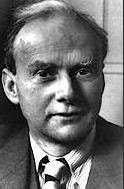Astrophysics
Astrophysics, the branch of astronomy that seeks to understand the birth, evolution, and end states of celestial objects and systems in terms of the physical laws that govern them. For each object or system under study, astrophysicists observe radiations emitted over the entire electromagnetic spectrum and variations of these emissions over time (see Electromagnetic Radiation ; Spectroscopy ; Spectrum ). This information is then interpreted with the aid of theoretical models. It is the task of such a model to explain the mechanisms by which radiation is generated within or near the object, and how the radiation then escapes. Radiation measurements can be used to estimate the distribution and energy states of the atoms, as well as the kinds of atoms, making up the object. The temperatures and pressures in the object may then be estimated using the laws of thermodynamics .




